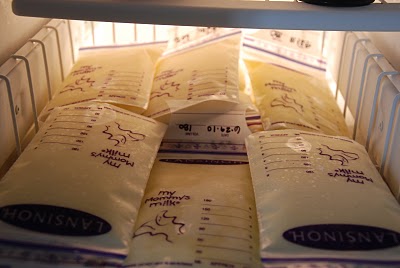 Infants greatly benefit from drinking breastmilk than obtaining nourishment from formula at this young age. Since breastmilk is the best nourishment source for babies, mothers must follow several breastmilk storage guidelines to ensure quality.According to the 2013 Nebraska Child Care Licensure Regulations, breastmilk storage guidelines for childcare facilities are stricter compared to home practices. This guide has all the vital information to meet mothers and childcare professionals’ need.
Infants greatly benefit from drinking breastmilk than obtaining nourishment from formula at this young age. Since breastmilk is the best nourishment source for babies, mothers must follow several breastmilk storage guidelines to ensure quality.According to the 2013 Nebraska Child Care Licensure Regulations, breastmilk storage guidelines for childcare facilities are stricter compared to home practices. This guide has all the vital information to meet mothers and childcare professionals’ need.
What Containers to Use When Storing Breastmilk
Knowing the right containers is the first part of studying breastmilk storage guidelines. Experts recommend these containers for breastmilk storage:
- Glass or plastic containers with perfect-fitting lids
- Bisphenol A (BPA)-free containers
- Containers with sufficient volume capacities
- Containers that can be washed using hot and soapy water and can be air-dried
- Freezer bags made for breastmilk storage
Experts do not recommend disposable plastic bags and bottle liners due to being highly prone to contamination. Furthermore, bags made from low quality materials tend to break easily and leak, which leads to spoiling breastmilk nutrients.
Parents must also choose containers that can be labeled easily, particularly for those who bring their babies to childcare facilities.
How to Store Breastmilk Properly
Three reasons highlight the importance of proper breastmilk storage. First is to assure freshness since parents want the best for their babies. Second is to protect it from contaminants that may be dangerous to infant’s health. Third is to lockin nutrients for babies’ consumption.
1. How Much Breastmilk Should Be Stored Each Time?
Breastmilk should be stored in small amounts, ideally around two ounces per container for full-term babies. Mothers pumping for premature infants may want to keep milk in much smaller amounts. Milk consumption among breastfed infants is less than those who are fed with formula.
2. How to Store Fresh Breastmilk
These breastmilk storage guidelines are for storing fresh milk for healthy full-term babies.
|
Place |
Temperature |
How Long |
Cautions |
|
Countertop or table |
68 to 78 degrees Fahrenheit |
4 to 6 hours |
Containers need to be covered properly and kept cool as much as possible. Using a cool towel can retain its cool temperature. |
|
Cooler |
59 degrees Fahrenheit |
24 hours |
Put ice packs together with the containers to keep it fresh.Avoid opening the cooler frequently. |
|
Refrigerator |
39 degrees Fahrenheit |
3 to 8 days |
Place milk at the back area of the refrigerator’s main body. |
|
Freezer |
0 to 4 degrees Fahrenheit |
6 to 12 months |
Place milk containers at the freezer’s back area. Maintain constant temperature. Long-term freezer storage may result to milk degradation. |
3. Should It Be Saved or Dumped?
|
Type |
Save or Dump |
Why |
|
Left over milk after feeding |
It is good for next feeding, and you should discard the left after. |
Feeding causes bacteria to transfer from the baby’s mouth to the bottle, which leads to milk contamination during long-term storage. |
|
Thawed milk |
Refrigerate for 24 hours after thawing, and then dispose. Do not refreeze. |
Frozen milk tends to lose immune properties that prevent bacterial growth unlike in the case of fresh milk. |
|
Refrigerated milk stored for eight days |
Transfer to new storage, then place inside the freezer. Parents can also discard this milk. |
Refrigeration keeps bacterial growth from occurring, but the milk tends to absorb odors or flavors of other foods stored inside the cooling appliances. |
4. More Tips on Breastmilk Storage
- Mixing frozen milk and regular milk is also okay, but mothers must cool the non-frozen milk. The general rule is the frozen milk amount should be more than fresh liquid milk.
- Leave enough space for milk expanding. Milk expands upon freezing, which stresses the importance of leaving an inch space between the container’s lid and milk. To prevent bags from breaking, squeeze out excess air from the bag and leave the same recommended space before fastening.
- Premature infants need special care at this critical age, which implies the importance of following breastmilk storage guidelines. Healthcare providers can be consulted about the good storage tips according to the infant’s health and mother’s condition.
- Parents must not microwave breastmilk regardless of its offered convenience. Bottles retain hot spots that can burn an infant’s mouth. Moreover, microwaving may also affect breastmilk’s composition significantly.
